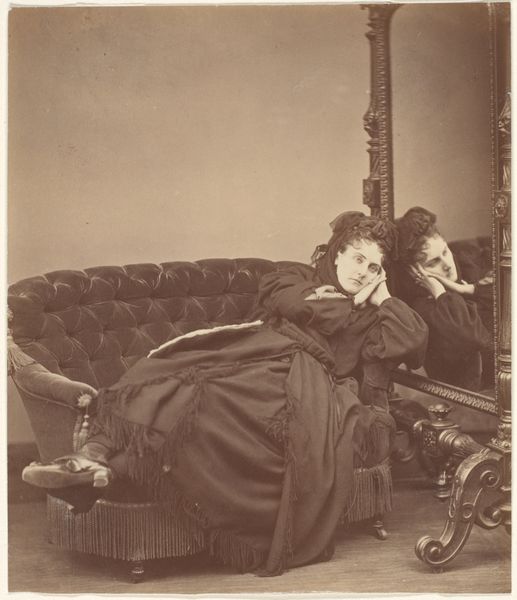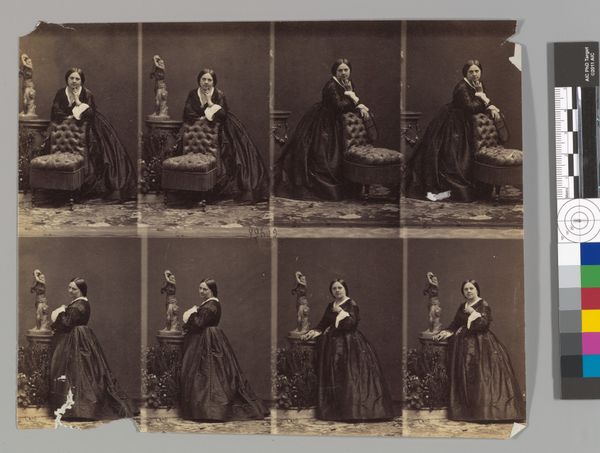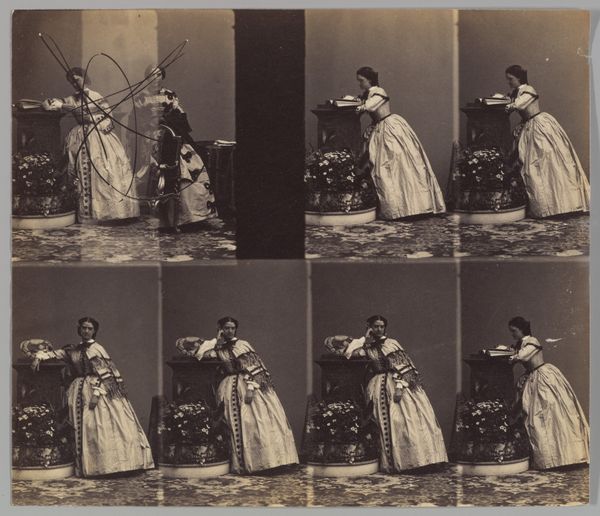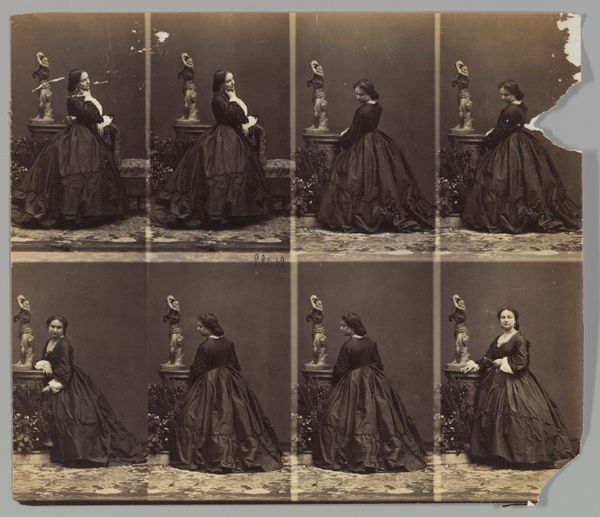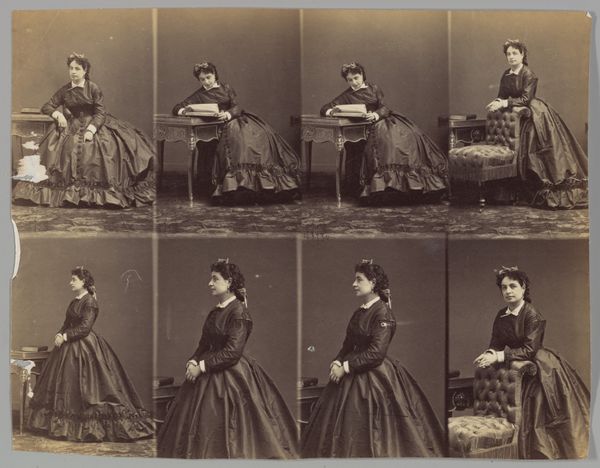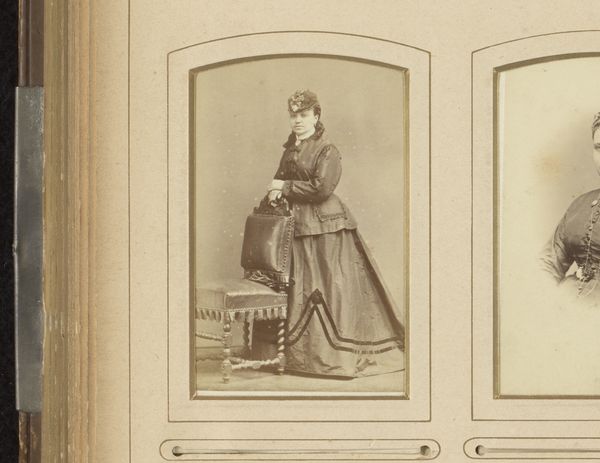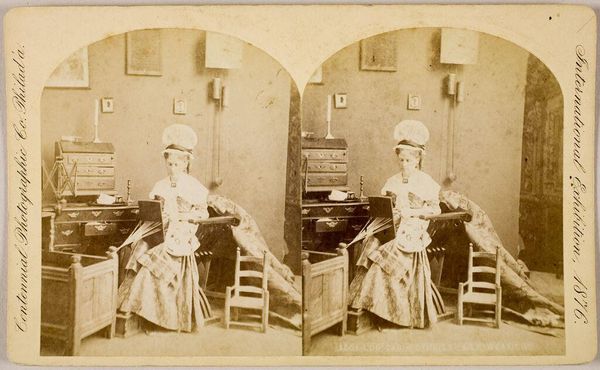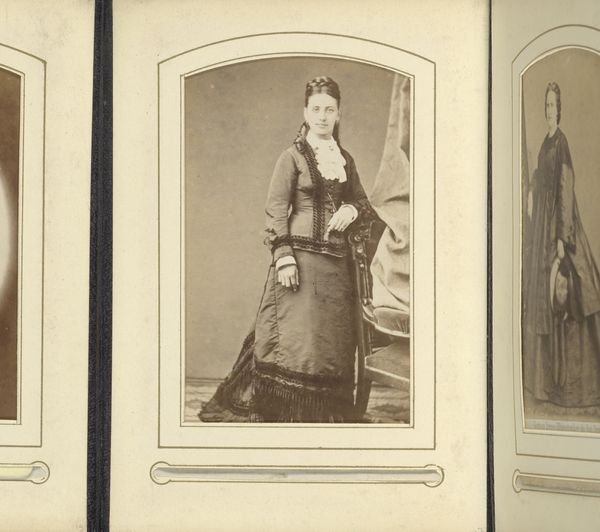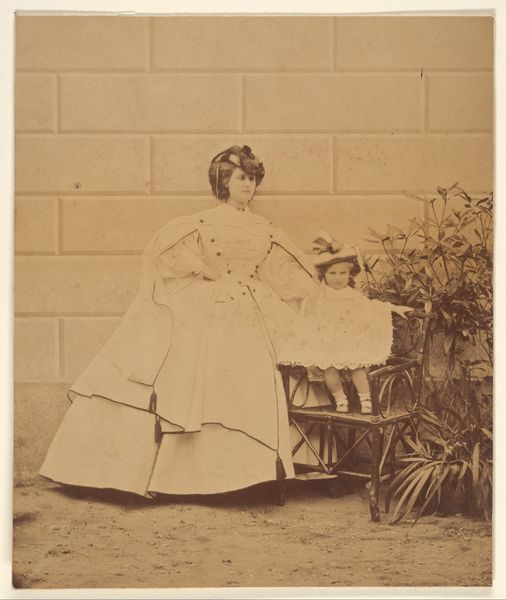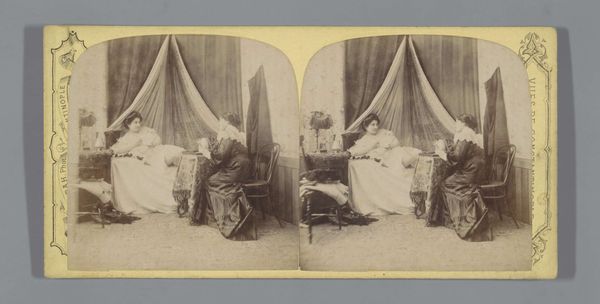
print, daguerreotype, photography
#
portrait
# print
#
daguerreotype
#
photography
Dimensions: Image: 20.3 × 12.1 cm (8 × 4 3/4 in.)
Copyright: Public Domain
Editor: This is "Dulare," a photographic print, specifically a daguerreotype, made by André-Adolphe-Eugène Disdéri between 1865 and 1875. It's at the Met. There is an appealing melancholy in the repetition and the somewhat awkward poses of the sitter. What kind of stories do you think these multiple images of the same woman are trying to tell? Curator: Indeed. Each repetition invites us to examine not only her physical presence but also the emotional weight she carries. The multiple images evoke a sense of both presence and absence. Do you see how her gaze shifts subtly between each frame? It speaks to the performance of portraiture, and the desire to capture a fleeting, authentic self. Editor: Yes, now that you mention it, it seems like she’s searching for something. Does the duplication relate to popular ideas or anxieties of the time? Curator: The rise of photography coincided with burgeoning interest in the human psyche. Think about the interest in spirit photography around this time, and the concept of capturing the 'aura'. These multiple exposures might be referencing an attempt to capture not just her image, but also something more elusive—her essence or inner self. The repetition also mirrors the era’s obsession with reproducibility and copies, challenging the notion of a unique, singular identity. Do you find her clothing speaks to a specific class or status? Editor: I would assume from her dress and pose that she comes from a wealthy family of that era. I guess she wanted multiple memories in slightly different moods. It also really emphasizes the power of photography to provide that access and flexibility for the individual. Curator: Exactly. This image acts as both a document of a specific individual and a broader reflection on cultural memory, identity, and the very nature of representation during a transformative period in history. Editor: I'll definitely look at portraiture differently now. It’s like a record of both presence and aspiration.
Comments
No comments
Be the first to comment and join the conversation on the ultimate creative platform.
